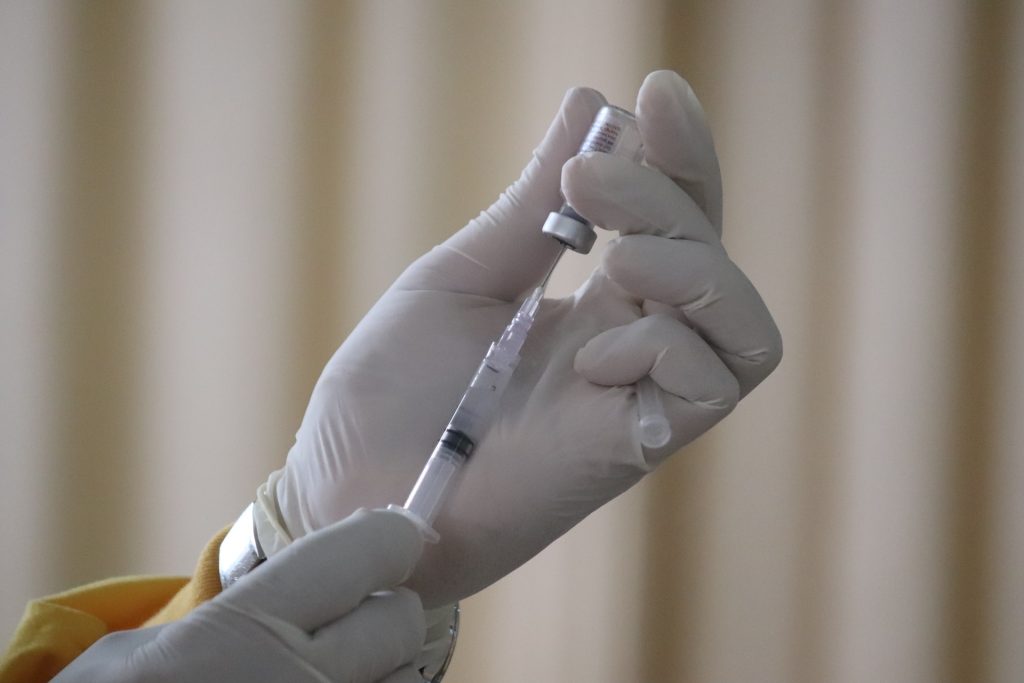New Research Finds that Ivermectin Reduces Malaria Transmission

A collaborative new study involving KEMRI-Wellcome Trust researchers has highlighted a new way to control malaria transmission. The study found that ivermectin, a drug normally used for neglected tropical diseases, led to a 26% reduction in new malaria infections among children aged 5-15 by killing feeding mosquitoes.
Malaria remains a global health challenge, with 263 million cases and 597 000 deaths reported in 2023. Current vector control methods, such as long-lasting insecticidal nets and indoor residual spraying, have become less effective due to insecticide resistance and behavioural adaptations in mosquitoes to bite outdoors and during dusk or dawn, when people are not protected by these measures. This underscores the urgent need for innovative solutions to combat malaria.
The BOHEMIA trial, the largest study on ivermectin for malaria to date, showed a 26% reduction in new malaria infection on top of existing bed nets,providing strong evidence of ivermectin’s potential as a complementary tool in malaria control. Coordinated by the Barcelona Institute for Global Health (ISGlobal) – an institution supported by the “la Caixa” Foundation – in collaboration with the Manhiça Health Research Centre and the KEMRI-Wellcome Trust Research Programme, the study has been published in The New England Journal of Medicine.
Ivermectin is a drug traditionally used to treat neglected tropical diseases like onchocerciasis which causes river blindness and lymphatic filariasis which causes elephantiasis. It has now been shown to reduce malaria transmission by killing the mosquitoes that feed on treated individuals. Given the rising resistance to conventional insecticides, ivermectin could offer an effective new approach totackle malaria transmission, especially in regions where traditional methods have become less effective.
The Unitaid-funded BOHEMIA project (Broad One Health Endectocide-based Malaria Intervention in Africa) conducted two Mass Drug Administration (MDA) trials in the high-burden malaria regions: Kwale County (Kenya) and Mopeia district (Mozambique). The trials assessed the safety and efficacy of a single monthly dose of ivermectin (400mcg/kg) given for three consecutive months at the start of the rainy season in reducing malaria transmission. In Kenya, the intervention targeted children aged 5–15, while in Mozambique it focused on children under five.
In Kwale County, Kenya, children who received ivermectin experienced a 26% reduction in malaria infection incidence compared to those who received the control drug. The trial involved over 20 000 participants and more than 56 000 treatments, demonstrating that ivermectin significantly reduced malaria infection rates – particularly among children living further from cluster borders or in areas where drug distribution was more efficient. Moreover, the safety profile of ivermectin was favourable, with no severe drug-related adverse events and only mild, transient side effects already seen with ivermectin in campaigns against neglected tropical diseases.
Professor Marta Maia, Associate Professor at the Centre for Tropical Medicine and Global Health and Medical Entomologist based at the KEMRI-Wellcome Trust Research Programme, said: ‘The findings suggest that ivermectin MDA could be a valuable complementary strategy for malaria control, particularly in areas where mosquito resistance to insecticides is a growing concern.’
Dr Joseph Mwangangi, Senior Principal Research Scientist at the KEMRI-Wellcome Trust Research Programme, added: ‘These results align with the World Health Organization’s (WHO) criteria for new vector control tools.’
Carlos Chaccour, co-principal investigator of the BOHEMIA project said: ‘We are thrilled with these results. Ivermectin has shown great promise in reducing malaria transmission and could complement existing control measures. With continued research, ivermectin MDA could become an effective tool for malaria control and even contribute to elimination efforts.’
In contrast, the implementation of the Mozambique trial in the rural district of Mopeia faced severe disruptions due to Cyclone Gombe in 2022 and a subsequent cholera outbreak, which significantly disrupted operations.
Francisco Saúte, director of the Manhiça Health Research Centre said: ‘One of the most important lessons we learned from the trial in Mopeia is thatstrong community engagement is essential. Building trust with local communities and fostering close collaboration with the Health Ministry, National Malaria Control Program, and local authorities was key to ensuring acceptance of the ivermectin MDA.’
In addition to reducing malaria transmission, ivermectin MDA offers significant collateral benefits. The BOHEMIA team found an important reduction in the prevalence of skin infestations such as scabies and head lice in the ivermectin group in Mozambique, and the community reported a major reduction in bed bugs in Kenya. These effects are particularly valuable when ivermectin is integrated into existing delivery systems, maximising its impact on public health.
The study is part of a larger global effort to assess ivermectin’s potential in malaria control. The findings have been reviewed by the WHO vector control advisory group, which concluded that the study had demonstrated impact and recommended further studies. Findings were also shared with national health authorities as they evaluate the potential inclusion of ivermectin in malaria control programmes.
Regina Rabinovich, BOHEMIA PI and Director of ISGlobal’s Malaria Elimination Initiative said: ‘This research has the potential to shape the future of malaria prevention, particularly in endemic areas where existing tools are failing. With its novel mechanism of action and proven safety profile, ivermectin could offer a new approach using a well-known, safe drug that can add to the effect of other mosquito control tools available today.’
Source: Nuffield Department of Medicine, University of Oxford






